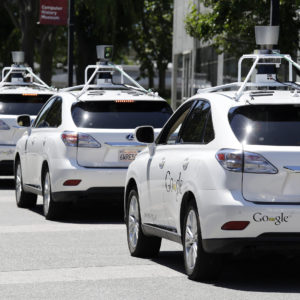It’s a common tale. A new technology is introduced that will solve a big problem, particularly for a given demographic. But because of how it works, it only helps those who already have many solutions, rather than more vulnerable groups.
We saw this with e-scooters, pitched as a mobility solution for low-income transportation deserts. But the average users are middle-income. We saw this with rideshare, pitched as on-demand transportation for those who cannot drive, but blind and deaf individuals still have difficulty using these services. And now, without intervention, history may repeat itself with automated vehicles (AVs), pitched as a mobility solution for older adults who cannot drive. Older adults have widely varying functional and cognitive health and life circumstances like finances, living situations, and so forth. Whether they benefit from AVs may hinge on taking explicit steps. Lessons can be learned from experiences with other technologies.
A lesson from the OXO peeler: Make it accessible to a range of physical functional statuses. The OXO peeler is famous. As one of the first consumer goods to consider universal design, it was specifically made to be an “intuitive, user-oriented design across the ability spectra.” Despite being 30 years old, the product is still incredibly popular and was even inducted into the MOMA permanent collection. The reason is simple – from its rubbery cushy handle to its sharp-angled blade, the peeler just works, and works particularly well for those with arthritis or other hand issues that make conventional peelers less palatable. Designers of AVs could take into consideration the physical abilities of older adults. Will there be grab bars to make it easy to get in and out of the vehicle? Will there be easy stowage for a walker or cane? Will the lighting be bright enough? These and other factors may determine older adult usability. The lesson of universal design – that making products work for some can improve them for all – can be applied to AVs.
A lesson from conventional cars: Make it available at a variety of price points. You can get from point A to point B in both a 2002 Dodge Intrepid SE which costs $500 or a 2021 Bugatti Divo which costs $5 million. The experience of traveling may be qualitatively different, but both accomplish the same goal. The diversification in the marketplace and the ability to match any vehicle to your needs and means have made cars work for many, whether affluent or living off of social security. For AVs to be widely accessible, their services could be made available at varying price points. Additionally, government programs such as Medicare Advantage that allow participating insurers to opt to provide payment for transportation for routine medical visits could cover AV rides.
A lesson from elevator operators: Make it easy. When elevators first entered buildings, they did so hand-in-hand with elevator operators. This was a skilled position that made the ride smooth or jolting, quick or inconvenient, depending on operator abilities. Once modern electronics made it so doors opened and closed automatically and destinations could be designated by touching a button, the profession became obsolete. Making it easy to summon an AV, enter the vehicle, interact with it en route, exit it, and dismiss it across a wide range of physical and cognitive conditions could be key to older adult use.
A lesson from microwave ovens: Make it trustworthy. Microwaves spooked consumers originally. But it won people over by doing what it claimed to do – heating food – in addition to being cheap and easy to use. Consumer trust in the technology could be critical. Research shows that older adults are the least likely of any age group to trust AVs. But they have expressed willingness to use other in-vehicle technologies that enable them to continue to live independently. AV producers and service providers might seek to win the trust of older adults through demonstrated safety, but also by enabling their everyday lives.
A lesson from smartphones: Don’t make those who can’t use them left behind. Today we use smartphones for everything from ordering food, to exercise, to entertainment, to summoning the aforementioned e-scooters and rideshares. Some products and services are simply inaccessible or much harder to access without a smartphone. This can make life harder for older adults who cannot or don’t want to use a smartphone. A percentage of older adults will never be able to use AVs because of cognitive or physical functional status. A shift in resources toward AVs without continued support of non-automated transportation options may leave those who cannot use AVs with fewer and worse transportation options than before. Creating a two-tiered transportation system, with those who can use AVs doing so, could relegate others to under-funded, archaic, and otherwise limited alternatives.
Most of the factors that will determine if older adults use automated vehicles have little to do with the automated and everything to do with the vehicle, and the systems surrounding it. Putting older adults in proximity to AVs may not be enough to make this transportation usable. Ignoring this might mean the AV is not just driverless, but also passengerless. Now may be the time to make sure that the opportunity to support as many older adults as possible is seized by developers and prospective operators of AVs.

